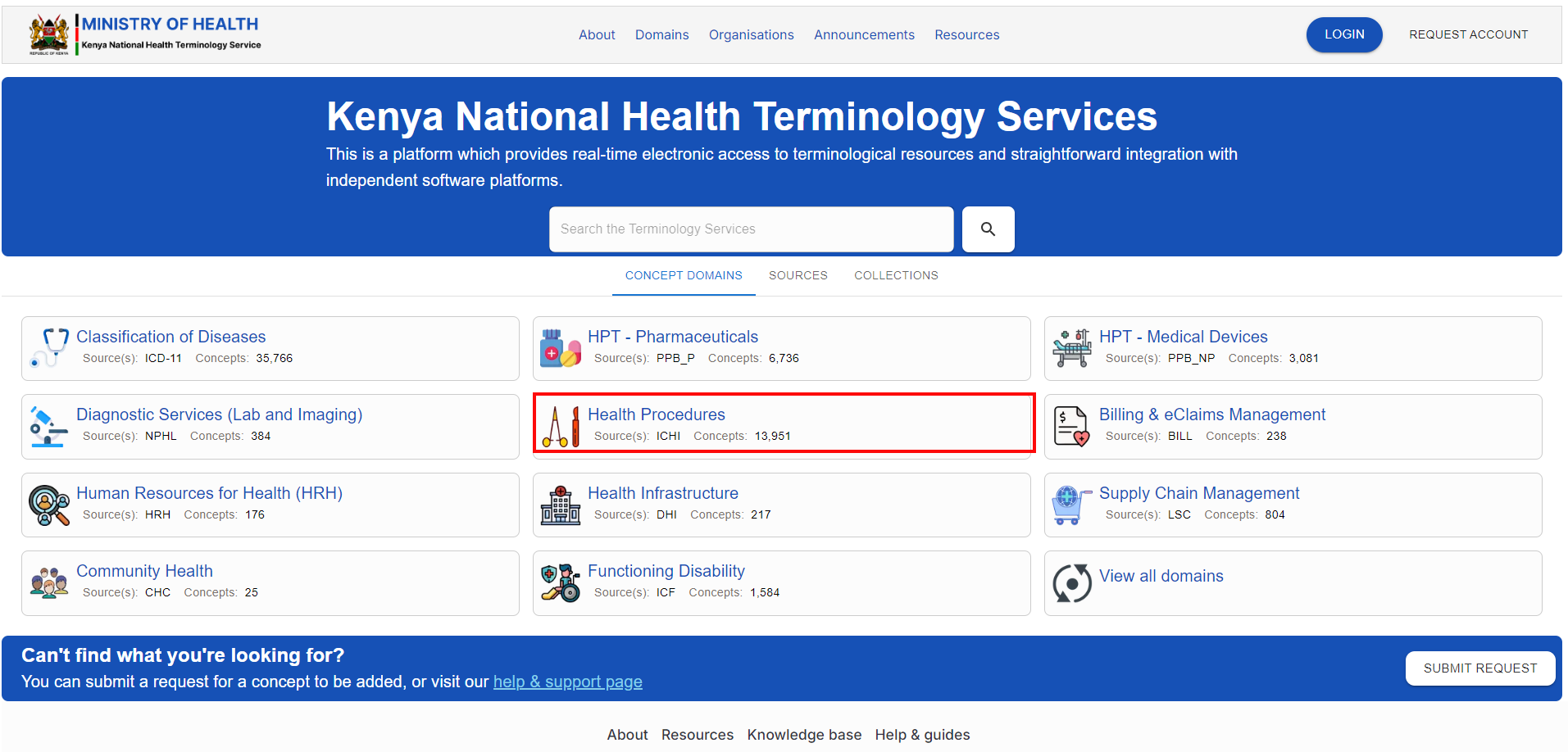Health Procedures
The health Procedures domain entails a wide range of standardized concepts and terminologies related to clinical and medical procedures. These procedures are integral to patient care and cover various diagnostic, therapeutic, and surgical interventions performed in healthcare settings. The domain includes the following components:
1. Diagnostic Procedures:
- Imaging Tests: Standardized terms for procedures like X-rays, MRIs, CT scans, ultrasounds, and other imaging techniques used to diagnose medical conditions.
- Laboratory Tests: Concepts related to blood tests, urine tests, biopsies, and other laboratory-based diagnostics.
- Physical Examinations: Standard terms for different types of physical assessments performed by healthcare providers.
2. Therapeutic Procedures:
- Medical Treatments: Procedures related to the administration of therapies, including chemotherapy, radiation therapy, and physical therapy.
- Surgical Procedures: Standardized names and descriptions for surgical interventions, ranging from minor surgeries like wound suturing to major operations like heart bypass surgery.
- Rehabilitation Procedures: Terms related to physical, occupational, and speech therapy aimed at restoring function or improving quality of life after illness or injury.
3. Preventive Procedures:
- Screenings: Procedures for preventive screenings like mammograms, colonoscopies, and Pap smears.
- Vaccinations: Standardized concepts for immunization procedures, including the administration of vaccines.
- Health Check-ups: Routine procedures for monitoring health status and preventing disease.
4. Interventional Procedures:
- Minimally Invasive Procedures: Concepts for procedures like laparoscopic surgeries, catheterizations, and endoscopies that involve minimal incision or tissue disruption.
- Injections and Infusions: Terms related to the administration of medications or fluids via injection or intravenous infusion.
5. Emergency Procedures:
- Resuscitation: Standardized terms for procedures like cardiopulmonary resuscitation (CPR), defibrillation, and advanced life support.
- Trauma Care: Procedures related to the management of traumatic injuries, including wound care, fracture management, and emergency surgeries.
6. Supportive and Palliative Procedures:
- Pain Management: Concepts related to procedures for managing acute and chronic pain, including nerve blocks, epidural injections, and palliative care interventions.
- End-of-Life Care: Procedures aimed at providing comfort and managing symptoms in patients with terminal illnesses.
7. Coding and Classification:
- Procedure Coding Systems: Integration with standardized coding systems like the International Classification of Diseases (ICD) for procedures.
- Procedure Mapping: Linking procedures to appropriate diagnostic codes, clinical guidelines, and treatment protocols.
8. Interdisciplinary Procedures:
- Multidisciplinary Interventions: Concepts that capture procedures involving multiple healthcare professionals, such as team-based approaches to complex surgeries or comprehensive care plans for chronic diseases.
9. Patient Education and Consent:
- Informed Consent Procedures: Standardized terms for documenting patient consent for specific procedures.
- Patient Education: Concepts related to educating patients about procedures, risks, benefits, and alternative options.
These concepts are sourced from the International Classification of Diseases 11th Revision
To access the domain, navigate to the KNHTS Homepage and select the highlighted domain below
Refer to the Classification of Diseases page in this user guide to see navigate around and perform actions related to concepts


No Comments